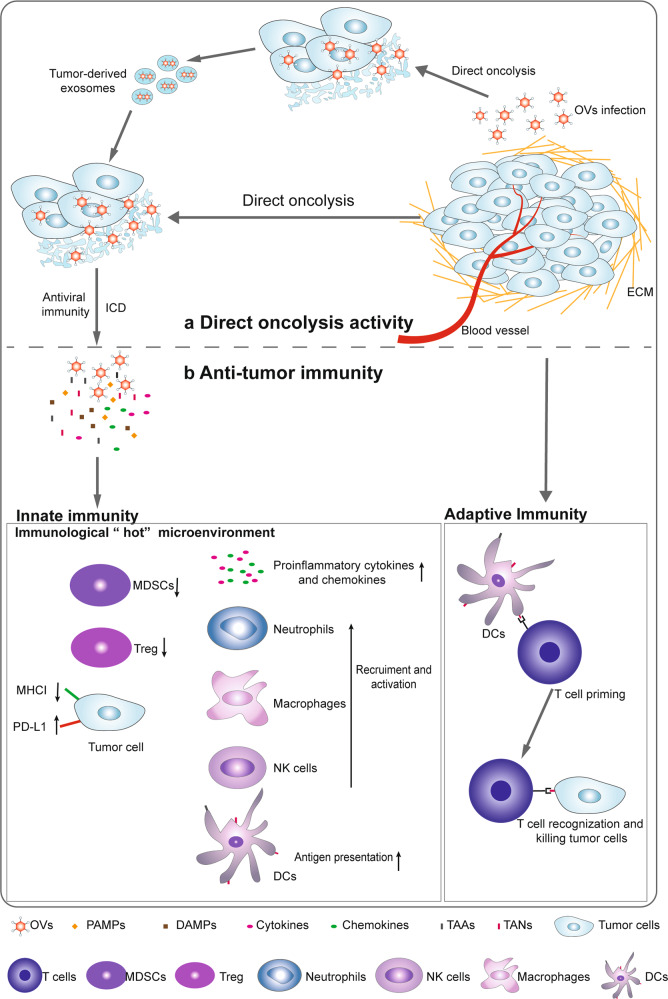Fig. 2.
Mechanisms of oncolytic virus (OV) action. a Direct oncolysis: new viral particles are released from OV-lysed tumor cells to infect unaffected tumor cells. Moreover, exosomes derived from OV-infected tumors contain OVs and can exhibit high tumor tropism. b Antitumor immunity: immunogenic cell death (ICD) induced by OV exposure leads to the release of multiple molecules, including pathogen-associated molecular pattern molecules (PAMPs), damage-associated molecular pattern molecules (DAMPs), tumor-associated antigens (TAAs) and tumor-associated neoantigens (TANs). The identification of PAMPs/DAMPs through pattern recognition receptors (PRRs) in cancer or immune cells triggers the expression of proinflammatory cytokines such as type I interferons (IFNs), interleukin (IL)-1β, IL-6, IL-12, TNF-α, granulocyte macrophage colony-stimulating factor (GM-CSF), and chemokines such as CCL2, CCL3, CCL5 and CXCL10. Chemokines recruit neutrophils and macrophages to infection sites, and these cytokines stimulate the activity of innate immune cells such as NK cells and DCs, which further stimulate the production of IFNs, TNF-α, IL-12, IL-6, and chemokines, resulting in the amplification of the initial innate response and turning immunologically “cold” tumors into “hot” tumors. Type I IFNs increased the levels of MHC class I and II molecules and costimulatory molecules such as CD40, CD80, and CD86 on the surface of DCs. The released TAAs and TANs are processed and ultimately presented on the APC surface in complex with MHC molecules. Multiple cytokines and chemokines contribute to the recruitment and activation of antitumor CD8+ T cells and B cells

